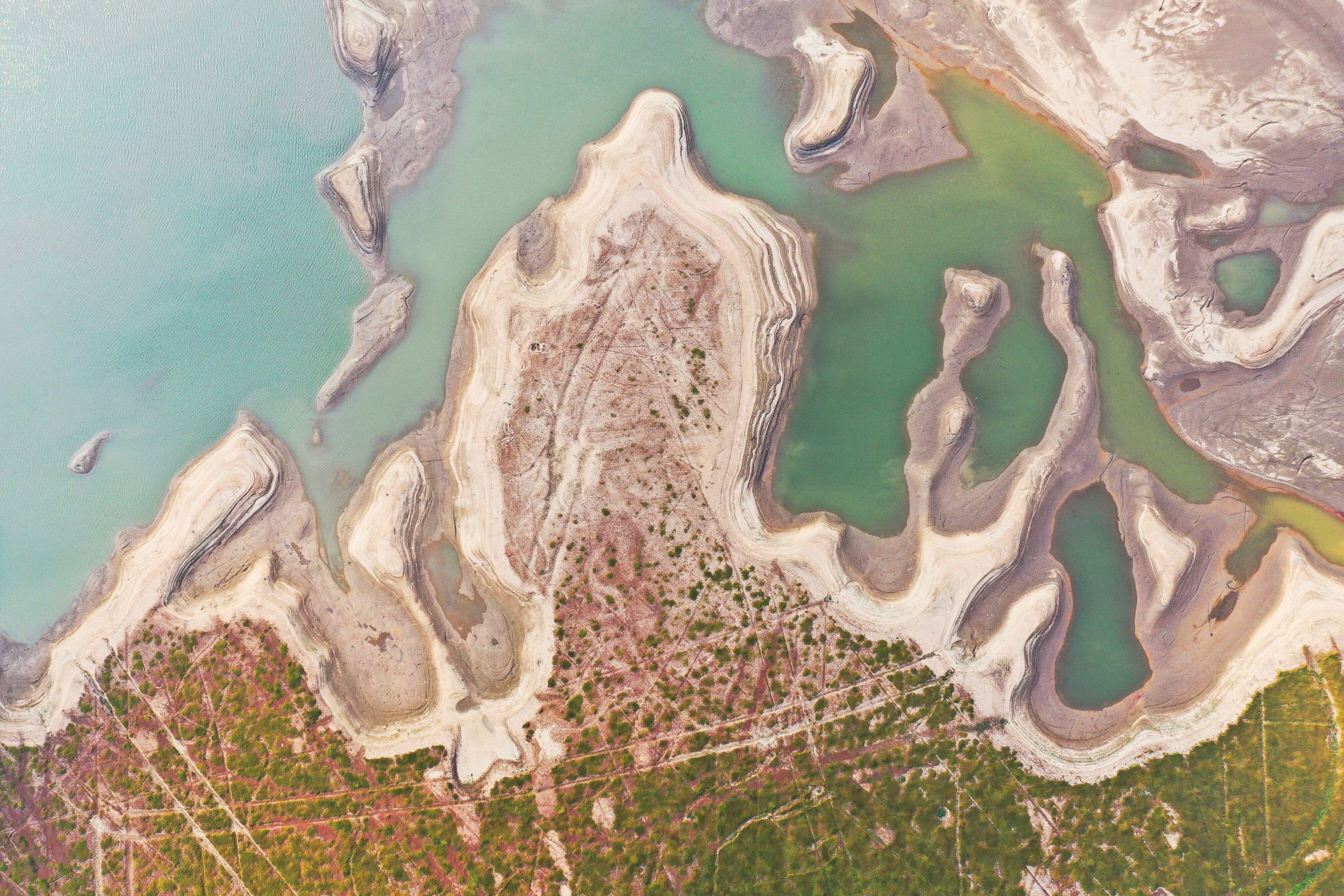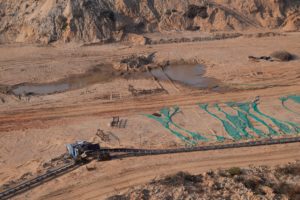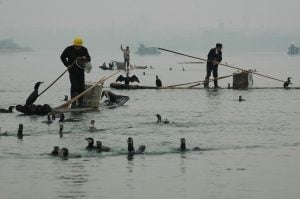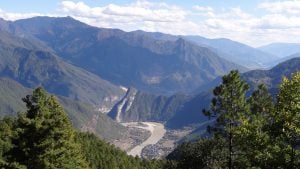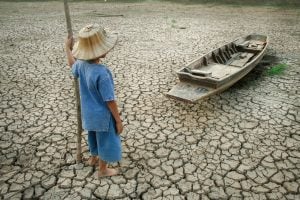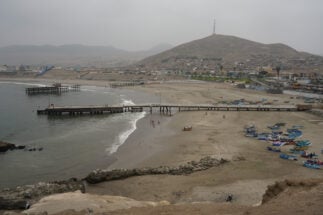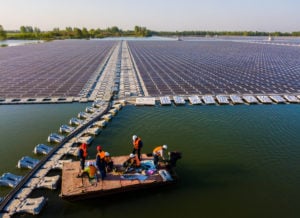Poyang lake, in the middle stretch of the Yangtze, fluctuates dramatically in size each year following the rhythm of the great river. It can reach over 3,500 square kilometres when the river floods in summer, then shrink to less than 200 square kilometres in winter.
The lake is one of the most important stopover sites for migratory birds on the East Asian-Australasian Flyway, providing a winter habitat for hundreds of thousands who feed and breed on the riches of the wetlands as the water retreats.
That natural rhythm has been in jeopardy since the beginning of the 21st century. Upstream dams on the Yangtze, the Three Gorges in particular, have altered the hydrology of the lake, causing severe ecological and social consequences.
Proposals to dam the lake in order to better control its water levels have come and gone over the years. Now, in early 2021, the pre-approval disclosure of the location of a sluice wall across the connection between the lake and the Yangtze River is set to ignite more debate. The engineering fix, which could lessen the hydrological impact on the lake of the dams upstream, may create new problems for downstream.
The case demonstrates the need for a holistic approach to river basin coordination of major hydrological projects along the Yangtze.
Damming the lake: a 19-year history
In 2002, People’s Congress members in Jiangxi province (where most of Poyang lies) proposed a dam to keep the lake’s winter water levels at 18 metres deep. The dam would have essentially made Poyang into a multifunctional reservoir for flood control, power generation, navigation and aquaculture. The proposal, approached with developmental zeal, would have eradicated the lake area’s dry season functions as a wetland. But it was shelved after meeting stiff opposition from central government, academics and others.
Then, in 2003, the Three Gorges dam began holding back water that would otherwise have flowed into the lake. The dam’s massive reservoir, which flooded more than 600 square kilometres and elevated water levels to 175 metres, thoroughly altered the Yangtze’s hydrology. Since then, even some strong opponents of the Poyang lake dam have changed their minds about the necessity for an engineering solution. Rather than a dam, a sluice wall for drought-mitigation has become an attractive counter-measure to the impact of the Three Gorges.
Hu Zhenpeng, a former vice governor of Jiangxi province in charge of water engineering, is one of those who have had second thoughts about protecting the lake using more infrastructure. He told China Dialogue: “The Three Gorges Dam makes drought in the autumn and winter a norm for the lake, regardless of whether it’s a high-flow or low-flow year. The shrunken lake and extremely low water levels affect water quality and degrade the wetlands, the living environment for phytoplankton, submerged plants, benthic animals and fish species.” He said his motivation for opposing the original dam and now supporting a sluice wall remains unchanged: to maintain the unique natural rhythms of the lake. Water levels should not be kept artificially high, he said. Neither should they be so low as to make the lake a “grassland”, when a mudflat is needed as a last sanctuary for endangered aquatic species and migratory birds in the Yangtze River basin.

In 2016, multiple environmental NGOs openly opposed the idea of a drought-mitigation sluice wall when the Jiangxi provincial government made its environmental impact assessment (EIA) public. They argued it was but a makeshift plan for the Poyang lake dam, an engineering project in the name of conservation. They expressed concern that it would further damage the Yangtze’s natural environment, threatening the ecology of the entire river basin as well as the safety of drinking water downstream.
The project disappeared from public sight in the following years, but Jiangxi didn’t give it up. A renewed EIA, published in December 2020, of a modified plan shows how the province wants to manage the lake’s water levels through the sluice wall. At the end of the flood season, in September every year, the water level at the wall would lower from around 14 metres to around 10 metres and stay there until February the following year. This would mimic the lake’s “natural” conditions before 2002, based on over 40 years of hydrological records. Without such a sluice wall, water levels in the winter usually dip to below 8 metres. Proponents of the wall say 10 metres at the gate would mean sufficient water in the lake to sustain migratory birds and navigation during the dry season. Jiangxi authorities argue the 10-metre solution would improve the lake’s ecological conditions while allowing better use of water resources.
Has the Three Gorges shrunk the Poyang lake?
“There is a tendency to blame every problem of the Yangtze River on the Three Gorges dam,” Lu Yaoru, a member of the Chinese Academy of Engineering, said at an expert panel on the subject in Beijing in January. But, he argued, winter drought has been a natural state of the Poyang lake since ancient times.
In 2013, as authorities conducted an ex-post EIA for the completion of the Three Gorges dam, its impacts on two major downstream lakes, Poyang and Dongting, were the subject of special investigations. Those involved in the assessment – including officials from the then Ministry of Environmental Protection, Ministry of Water Resources, and members of the Chinese Academy of Sciences and Chinese Academy of Engineering – did not dispute a basic fact: the Three Gorges dam has a real effect on the lakes, and this was underestimated in the EIAs of the 1980s and 1990s that predicted the dam’s impact.

According to the Three Gorges’ ex-post EIA and the EIA of the Poyang lake sluice wall, the lake’s water levels did drop consistently during the autumn and winter dry season from 1956 (when hydrological records began) onwards. However, 2003 was still a turning point for Poyang. When the Three Gorges started holding back water that year, the lake’s dry season came earlier, stayed longer, and saw much lower water levels.
Opponents of the sluice wall claim deeper water in the winter would make the lake unfit for migratory birds. They believe current water levels in the winter are within the range of natural variations and do not affect the number and species of birds overwintering at the lake. Human interference through engineering is unnecessary, they say.
But the draft EIA of the sluice wall cites official monitoring data showing that those migratory birds most sensitive to habitat changes have already moved overwintering grounds. Since 2015, there have been observable trends of birds that feed on submerged plants to spread to areas surrounding the lake, creating pressure on agricultural lands such as paddy fields and lotus root farms. Siberian white cranes, grey cranes and tundra swans that used to overwinter in remote lake areas are now at risk of clashing with humans.

Is there an alternative?
As soon as the sluice wall was put forward as an option, multiple counter-proposals were suggested and discussed. One of the most prominent alternatives is to coordinate water dispatched from upstream dams. Using water storage in the upstream dams (including the Three Gorges) earlier in the year has some limited effect on controlling early or rapid water level drops at the Poyang lake, according to studies conducted by the Yangtze River Water Resources Committee under the Ministry of Water Resources and the Nanjing Institute of Geography and Limnology.
But the size of the Three Gorges reservoir is simply too large for joint dispatch to solve the issue. If water levels at the Yangtze River mouth of Poyang lake are to be restored to their pre-2003 state, the only way is for the Three Gorges to stop restricting water flow. Even in this unlikely scenario, the Poyang lake may still have a problem. Dams at the Three Gorges and further upstream intercept sediment. The clearer river water can therefore dislodge and carry more sediment from the river banks downstream, deepening river channels and lowering water levels. Dams on the five Poyang tributaries in the south feeding the lake have no impact given the tiny proportion of water inflow they account for compared to the Yangtze itself. One estimation projects a mere 17 centimetre elevation in level if all 20 tributary dams were to hold water for the Poyang Lake for release during the winter.
One expert involved in the EIA of the sluice wall told China Dialogue that the lake has essentially lost its rhythm: “No matter the method, you need to control and restore the lake’s water level changes to prevent steep degradation of its important wetland ecosystem, on which many endangered species and fishery resources depend.”
River basin coordination
The Three Gorges dam does not just affect the Poyang lake. Further downstream, the Yangtze River estuary is becoming more saline as less river water reaches it. The impact is mostly from September to October each year, when the dam holds water. Further water hoarding by the Poyang lake sluice wall at the same time (to neutralise the impact of the Three Gorges) could exacerbate the problem. Therefore, the Jiangxi province plan includes a proposal to leave the sluice wall open should saltwater intrusion become serious in the estuary.
“The debate should not focus on whether to build the sluice wall, but on how to run it. The key is controlling water levels and the timing,” said the EIA expert. “The sluice wall will not reduce total run offs [of water] going to the downstream, but it can hoard water at critical moments when downstream provinces need it. Although Jiangxi province has openly committed to hand over control of the sluice wall to the Yangtze River Water Resources Committee, it still has the leverage in such negotiations.”
The expert argues that given the collective, irreversible impact of the Yangtze River dams on the hydrology and ecology of the river basin, building a sluice wall can ameliorate the pressing problems facing the Poyang lake. But it will further complicate cross-provincial struggles over water. He suggests improving coordination mechanisms along the Yangtze River basin, with clarifying divisions of responsibility and water use priorities being the key.
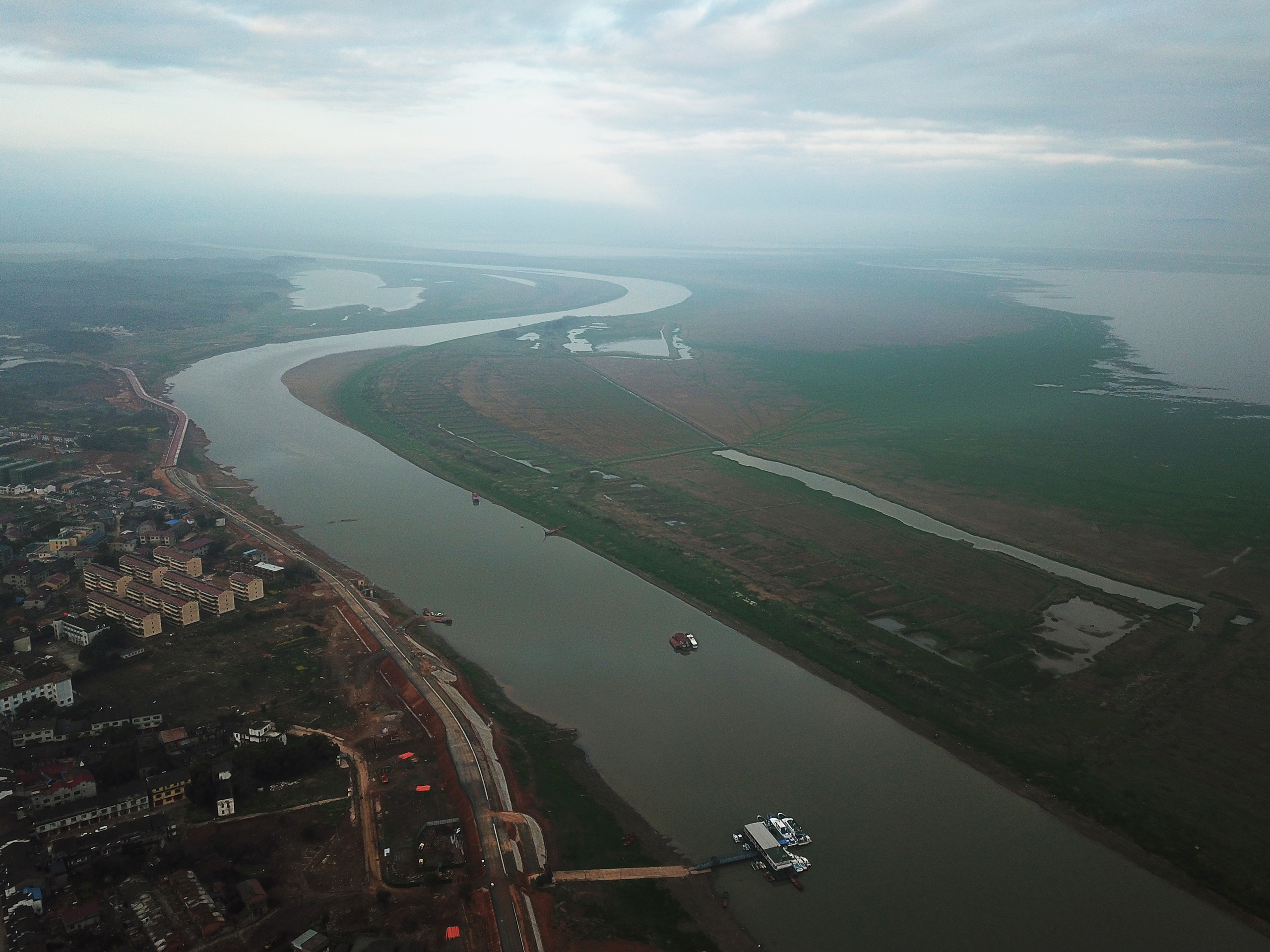
Qin Tianbao, director of Wuhan University’s Institute of Environmental Law Studies, told China Dialogue that the Yangtze River is too heavily burdened with development and water use demands. The complex river basin also touches on the interests of many stakeholders, fixing one problem for some can lead to new problem for others. He believes that conservation efforts should consider the whole river basin, and that is exactly what has been lacking so far.
On 1 March, the new Yangtze River Protection Law entered into force. The law calls for the establishment of a “National Yangtze River Basin Coordination Mechanism”. But so far there has been no clear roadmap as to how such a mechanism should be set up and play its role.
